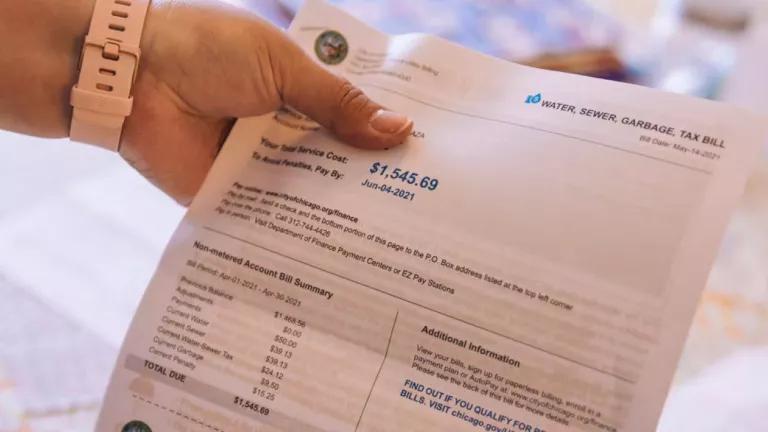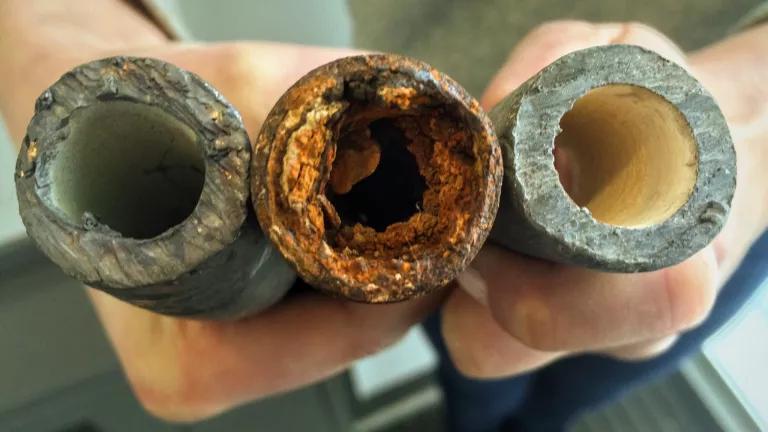EPA Advisory Board to Weigh in on Water Affordability
NRDC comments offer a framework for solutions.

Taylor Glascock for NRDC
Water affordability is top-of-mind these days for many water wonks in DC.
In January, the U.S. Department of Health & Human Services (HHS), released a report on the temporary Low Income Household Water Assistance Program (LIHWAP), finding that by June 2023 it had restored water service or prevented disconnections over 650,000 times for low-income households. (Funding for LIHWAP expired this year, after over 1.6 million households received assistance. But Congress has not yet heeded the call to renew funding for the program.)
In February, the first-ever Senate bill to create a permanent low-income water assistance program was introduced, by Senator Padilla.
In March, HHS released “an analysis of the largest survey documenting [water and sewer] rates, arrears, disconnections and fees in one dataset in the country." Among nearly 1,900 water and sewer systems that responded, the average utility threatened 16% of its residential customers with water shutoffs because they fell behind on their bills in 2022—and actually disconnected about 5% its residential customers.
Now, this week, water affordability is on the agenda for EPA’s Environmental Financial Advisory Board (EFAB). [See the end of this blog for an update on the meeting.] EPA has presented the board with a set of questions on water affordability, requesting a report with recommendations by this fall.
Ahead of the EFAB meeting, NRDC submitted a letter with our own recommendations for the advisory board. Among other things, we urged EFAB to emphasize how the “business case” for water affordability can help overcome perceived legal and financial barriers to offering low-income discounts.
We also highlighted water affordability best practices from the Water Affordability Advocacy Toolkit—a comprehensive resource we published with National Consumer Law Center in 2022, which was informed by the experiences and insights of advocates, activists, and academics across the country. And we provided initial recommendations on what EPA can do under existing legal authorities to promote utilities’ uptake of those best practices.
Recognizing that EFAB’s scope touches only on certain aspects of water affordability, our letter offered a 5-part framework for thinking holistically about water affordability solutions:
- Reducing the costs that must be borne by ratepayers as a whole—without watering down standards that protect human health and the environment.
- Ensuring equitable allocation among ratepayers of the costs that water and sewer systems recover from their customers.
- Preserving access to water when customers are unable to afford their bill.
- Improving transparency and accountability of water systems to the people they serve.
- Ensuring nondiscriminatory provision of water services and equitable allocation of financial assistance to utilities.
Finally, we urged EFAB to be careful not to conflate “affordability” and “assistance.” An affordable water bill is one that a household can regularly and successfully pay on time without compromising its ability to meet other essential needs—and an affordability program is one that achieves an affordable bill for participating households. By contrast, assistance programs offer discounts and/or one-time grants that are not actually designed to ensure each participant’s bill will be affordable.
Assistance surely helps. And a permanent, federal low-income water assistance program is long overdue. Ultimately, though, we need a comprehensive set of solutions that ensure true affordability. We look forward to seeing how EFAB’s efforts will contribute to that shared goal.
[UPDATE 4/10/24: At today's EFAB meeting, board members highlighted some of the ideas offered in our comments. EPA's staff liaisons to the board stated that our "extensive" comments are helpful to inform the effort; they also noted that our letter points to the value of outreach to additional stakeholders beyond the committee. EPA staff also emphasized that they are eager to put EFAB's forthcoming recommendations to good use, including in connection with EPA's ongoing water affordability "needs assessment” study"; in that study, required by Congress in the Bipartisan Infrastructure Law, EPA will provide its own recommendations on how to address low-income water affordability challenges.]




